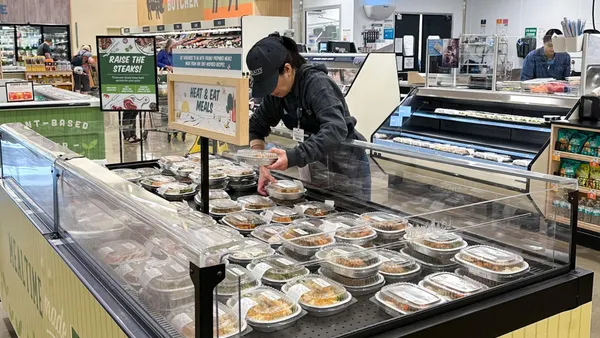From neighborhood diners to upscale bistros, restaurants are facing unprecedented menu planning challenges due to the devastating effects of highly pathogenic avian influenza (HPAI)—also known as bird flu.
Yet even amid rising costs and supply uncertainties, one truth remains clear: Consumers continue to expect and demand real eggs on restaurant menus. The unmistakable flavor and superior nutritional profile of genuine eggs have become synonymous with quality dining experiences, and restaurant operators recognize substitutions would be met with customer disappointment.
The American Egg Board acknowledges the difficulty restaurants face as they seek a safe, steady supply. “We have one message for all our loyal partners determined to satisfy guest expectations by keeping eggs on the menu: We are here to help, to serve as a resource, and we want to be part of the conversation,” says Nate Hedtke, Vice President Of Innovation And Customer Engagement for the American Egg Board, which works with the FDA, USDA and Safe Quality Food Institute to ensure egg safety.
The irreplaceable performance of real eggs
There’s no question real eggs are prized for their impressive nutrients. They are a well-known nutritional powerhouse, providing 6 grams (12% of the daily value) of high-quality protein and delivering all nine essential amino acids, as compared with egg substitutes which vary widely in protein type, amount and quality. They also provide a host of other nutrients that support lifelong health for the brain and body: choline, Vitamin A, B vitamins and carotenoids like lutein and zeaxanthin. And they are naturally low in sodium, another current health imperative.
In addition to contributing to diners’ health goals, they serve numerous other critical roles in the kitchen, notes Nelson Serrano-Bahri, Director of Innovation at the American Egg Board. “Eggs are such a powerful workhorse that it’s virtually impossible to replace the performance this one ingredient offers.”
Their most notable function, of course, is starring in egg-focused dishes. But they are a staple in restaurant kitchens for many other reasons: they bind ingredients together in dishes like meatballs or burgers; thicken and flavor dressings and sauces like aioli or hollandaise; and add shine to pastry dough and moisture to baked goods.
Cracking open new dining opportunities
While breakfast-focused eateries are an obvious fit for eggs, restaurants of all kinds feature them prominently in other areas of the menu, says Serrano-Bahri, citing several trends.
First is the blurring of dayparts, where consumers seek breakfast foods throughout the day. This reimagining of traditional foods has also transformed eggs from breakfast-only ingredients into versatile, flexible all-day heroes that drive sales—whether in a morning benedict, as a lunchtime salad topper or as a key protein source at dinner. Egg-forward dishes consistently perform well, while also allowing establishments to streamline inventory and maximize kitchen efficiency.
They are also a key part of menu innovation, explains Serrano-Bahri. “As diners become more adventurous, they’re looking for variety and are eager to try ethnic cuisines and different styles of cooking from other cultures. We know that eggs are part of every single meal across the world, and provide welcome diversity and inspiration to menus.”
Partnering with restaurants to keep eggs on the menu
Egg farmers are fighting HPAI with all their resources to keep this terrible disease off their farms, says Hedtke. “Maintaining a steady, safe supply for foodservice operators of the nutritious and delicious eggs your guests crave is a top priority for egg farmers, and we are partnering with them to help ensure restaurants can continue featuring the authentic egg dishes that keep customers coming through their doors.”
Naturally, the question on everyone’s mind is how long the price and supply volatility will last. “There’s been such a loss to the flocks that it will take time to get production back up,” Hedtke says. “Farmers are doing everything they can to increase availability, and we're starting to see relief in the short term, while recognizing we're dealing with a host of unknowns.”
Yet, as the industry works through these hard times, the demand remains indisputable. “Consumers love the taste and nutrition real eggs offer and view their presence as a hallmark of establishment quality and culinary integrity,” Hedtke says.
Throughout the crisis, the American Egg Board has focused on providing indispensable support to ensure real eggs can continue to have their irreplaceable impact on restaurants. For a suite of resources, visit the American Egg Board’s Foodservice microsite.










